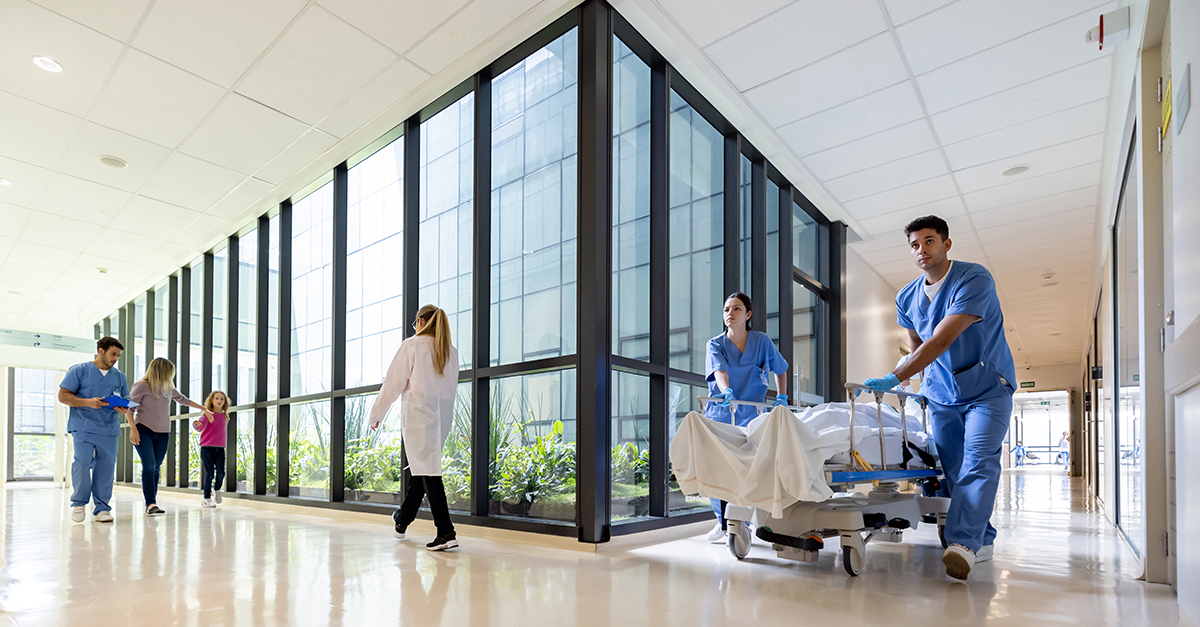In the ever-evolving, complex world of healthcare, the key to success often lies in embracing simplicity. This is especially true for maintaining standardized cleaning and disinfecting practices in environmental services (EVS). These procedures, compliant with U.S. Centers for Disease Control and Prevention (CDC) guidelines, are essential for effective infection prevention and ensuring the health and safety of healthcare facilities.
However, traditional methods found in EVS are often outdated, multi-step, and inconsistent, which can increase the risk of errors and inefficiencies. Particularly in the post-pandemic landscape, many facilities grapple with a mix of cleaning protocols that can lead to confusion and substandard outcomes.
Focusing on a simplified approach that consists of using standardized, single-use products offers an opportunity to enhance safety, reliability, and operational effectiveness, thereby addressing the evolving demands of the healthcare sector.
Surface disinfection’s role in infection prevention
Surface disinfection is a crucial component of infection prevention in community and healthcare environments, ranging from acute to nonacute care settings. High-touch surfaces in areas such as hospital rooms, urgent care facilities, physician offices, and outpatient clinics are often exposed to pathogens, creating potential reservoirs for infection. This makes consistent surface disinfection essential throughout the year, not just during seasonal spikes in respiratory illnesses such as influenza, RSV, and COVID-19. Continuous disinfection efforts help combat the persistent threat of healthcare-associated infections (HAIs) and the spread of dangerous multidrug-resistant organisms (MDROs).
Why simplification matters
The pandemic highlighted the challenges of managing diverse cleaning products and protocols. Many facilities still rely on a patchwork of disinfection solutions, leading to confusion and reduced compliance. Standardizing cleaning products and processes not only simplifies operations but also fosters a culture of consistency and accountability.
Traditional EVS cleaning methods often involve multiple steps, products, and tools, increasing the risk of human error and reducing compliance. Simplifying processes offers numerous benefits:
- Reduced errors: By eliminating chemical dispensers, mixing steps, and variability in product use, facilities can ensure consistent results.
- Streamlined training: Simplified processes are easier to teach and standardize, particularly in high-turnover environments.
- Operational efficiency: Fewer steps mean reduced time and resources spent on cleaning, enabling staff to focus on other critical tasks.
A recent study published by Infection Control & Hospital Epidemiology highlights the importance of revisiting cleaning protocols. Published in October 2024, the study examined automated disinfectant dispensers in 10 hospitals, revealing that 90% of the facilities had at least one malfunctioning dispenser. Alarmingly, 27.1% of the systems dispensed disinfectant at concentrations lower than expected, and 14% released no disinfectant at all. These findings underscore the urgency of reexamining established processes and looking for ways to improve and streamline how EVS maintains the health and safety of healthcare environments.
One process, one product
A ready-to-use product is pre-mixed, pre-measured, and combines cleaning and disinfection in a single action, provided the surface is not visibly soiled. Disinfectant wipes offer a perfect one-step approach, incorporating cleaning and disinfecting properties into one convenient tool. This method eliminates the need for multiple products, chemical dispensers, mixing, and other intermediate steps, significantly reducing the margin for error.
Advantages of ready-to-use products include:
- Consistency and reliability: Manufacturers rigorously test and validate these products to ensure efficacy against pathogens, removing variability caused by manual preparation.
- Ease of use: Cleaning staff can simply grab a wipe, clean the surface while adhering to the required contact times for pathogen elimination, and dispose of the wipe.
- Simplified training: A single product simplifies training, making it more accessible for busy teams, and easy to introduce to new employees.
- Improved compliance: With fewer steps and tools involved, staff are more likely to follow protocols correctly, driving better outcomes.
Choosing the right product
Not all cleaning and disinfecting products are created equal. It is crucial to select products with broad-spectrum efficacy, at least at an intermediate-level disinfectant standard. Consumer-grade products, such as those used in homes, are insufficient for healthcare and other high-risk environments. Instead, facilities should invest in solutions designed to meet the unique demands of professional cleaning, ensuring compatibility with various surfaces and maintaining efficacy over time.
William Rutala, a leading expert in infection prevention, outlined the key properties of an ideal disinfectant to ensure effectiveness, safety, and practicality in healthcare and other critical settings. These properties can be grouped into four essential areas:
Efficacy and performance
- Broad spectrum: Wide antimicrobial spectrum
- Fast acting: Should produce a rapid kill
- Residual effect: Should leave an antimicrobial film on treated surfaces
- Cleaner: Good cleaning properties
Environmental and user safety
- Not affected by environmental factors: Active in the presence of organic matter
- Nontoxic, odorless, and nonflammable
Surface and material compatibility
- Surface compatibility: Should not corrode instruments or metallic surfaces
- Soluble in water
- Stable in concentrate and use dilution
Ease of use and cost efficiency
- Easy to use
- Economical: Cost should not be prohibitively high
Achieve better outcomes
By simplifying processes, standardizing protocols, and choosing reliable, ready-to-use products, EVS teams can achieve greater efficiency, compliance, and safety. With the support of innovative products and empowered staff, facilities can create cleaner, safer environments for all.





